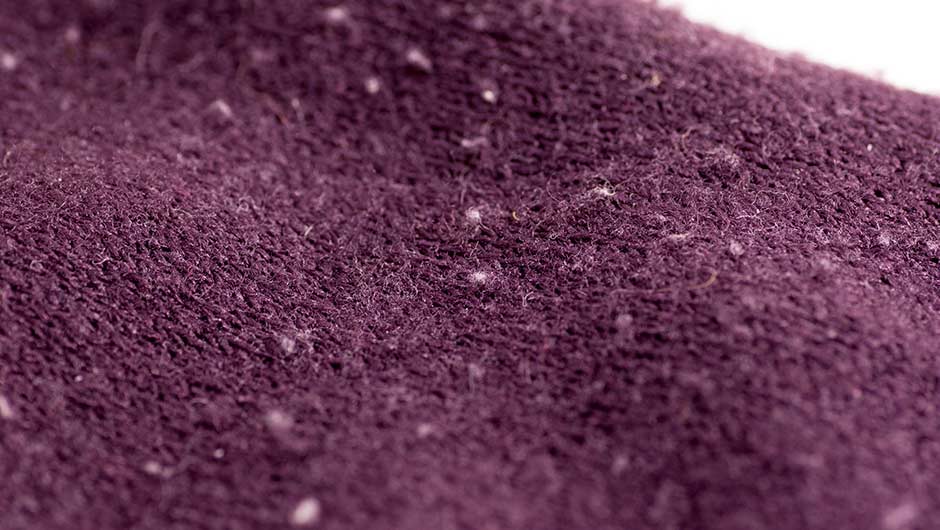This is an archived article and the information in the story may be outdated. Please check the time stamp on the story to see when it was updated last.

We all have that one sweater we practically live in. Unfortunately, you may have started to notice that after multiple washes, your beloved top has become covered with little knots of thread. Yep, your sweater has started to pill and it’s not a good look.
Pilling occurs when short fibers on the surface of fabric become tangled. The pills form from natural rubbing in everyday use, especially in areas where there is the most friction (like under the arms and around the collar). And when you throw your already unraveling garment in the wash, those little pills attract all kinds of other loose threads – which is why your black sweater may end up with white pills. Ugh.
So, how do we avoid the dreaded effect? Here, we reveal the multiple ways you can stop pilling in its tracks.
1. Use a gentle wash cycle.
The lighter motion will cause less friction between clothes. You’ll also want to turn your sweater inside out before throwing it in the wash, as this will protect it against the rough surface of other fabrics, zippers, and buttons.
2. Hand wash your garments.
This is an even more gentle washing method to help prevent pilling.
3. Sort clothes before washing them.
Washing your sweater with jeans will only cause further abrasion. And whatever you do, don’t wash your sweaters with terry cloth, especially if they’re made of polyester. Terry cloth is a lint-producing fabric, so it will cling tightly to any broken fibers on the surface of polyester.
4. Don’t overload the washer.
You may want to save a few quarters by cramming all your laundry in the machine at once, but you’ll definitely regret it later. Cramming the washer full doesn’t leave room for clothes to easily move around, which can cause more damage to the surface of garments. Plus, they probably won’t get as clean anyway when they’re all stuffed together.
5. Skip harsh detergents and bleaches.
These can weaken fibers and cause pilling. Instead, opt for a detergent that contains the enzyme cellulase, which will help break down any pills. You can also throw in a fabric softener to help coat your sweater and minimize the effects of rubbing.
6. Avoid the dryer altogether.
We’re sorry to tell you, but your dryer is the leading instigator of pilling. We recommend line drying your delicate items, but if you must use the machine, make sure to keep their drying times to a minimum.
7. Choose the right fabrics.
Some types of fabrics are more prone to pilling than others. You’ll want opt for woven fabrics over knits, which tend to pill the most. We understand if you can’t live without your knits, though, so if this is the case, make sure to choose ones that are more tightly sewn.
Even if after you follow all these steps some dreaded pills occur, there’s still no reason to panic that your favorite sweater is ruined. You can remove the fuzz balls with a handheld or battery operated fabric comb, which can easily be found at your local drugstore. And for a completely free method, you can remove the pills with scissors – just make sure to be extra careful so as not to cut any holes in your sweater!
For even more handy clothing tips and tricks, check out how to clean Converse and how to distress jeans.



























